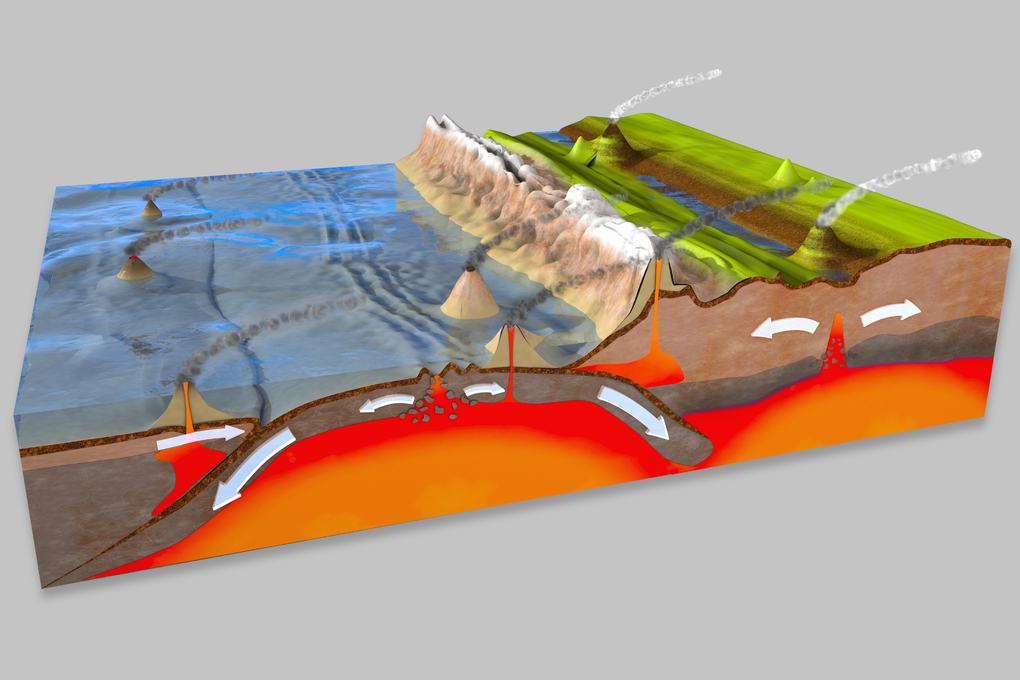A recent study shows that if there is life outside Earth, that civilization is likely to be very rare, extremely ancient, or far more advanced than humans.
Scientists have just published a remarkable study, claiming that the nearest intelligent civilizations are not in the Solar System or its surrounding area, but are most likely hidden on the far edge of the Milky Way, about 33,000 light years from Earth.
The discovery, presented at the 2025 Joint Conference of the Planetary Sciences Division (DPS) and the Europlanet Science Congress (EPSC–DPS 2025), outlines a challenging outlook for the search for extraterrestrial life.

The nearest aliens are on the far edge of the Milky Way (Photo: Getty).
Extremely rare conditions for life to form
The study emphasizes that the formation of a planet capable of supporting life with an atmosphere, chemical composition and geological activity similar to Earth is extremely rare.
This is also the main reason why the search for extraterrestrial intelligence (SETI) is so difficult.
Scientists have identified several key factors for a planet to be able to sustain life and develop into a technological civilization:
Atmosphere: A planet must have an atmosphere with a balanced composition. Earth's atmosphere of 78% nitrogen, 21% oxygen, and 0.042% carbon dioxide (CO₂) is a good example. Too little CO₂ will hinder photosynthesis, while too much will lead to an uncontrolled greenhouse effect.
Plate tectonics: This activity plays a key role in regulating CO₂ levels through the carbon-silicate cycle, removing CO₂ from the atmosphere and recycling it over geological time. Without this activity, CO₂ would be trapped in rocks, stopping photosynthesis.
“At some point, enough CO₂ will be removed from the atmosphere to stop photosynthesis,” said Manuel Scherf, a scientist at the Institute for Space Research at the Austrian Academy of Sciences and co-author of the study. “For Earth, this is expected to happen in the next 200 million to 1 billion years.”

Plate tectonics is an important activity that regulates CO₂ levels (Photo: Getty).
How long does it take for a civilization to rise?
The team simulated atmospheres with different concentrations of CO₂. The results showed that a planet with 10% CO₂ could sustain life for 4.2 billion years, and 3.1 billion years with 1% CO₂.
However, CO₂ is not the only factor. Oxygen also plays an essential role, with a minimum concentration of 18% to support the life of large animals and maintain fire - an indispensable element for the formation of technological civilization (metallurgy).
Time is also considered. On Earth, it took 4.5 billion years for humans to form. Using this time frame, scientists compare the biosphere's longevity with the potential for civilization to develop and the average lifespan of civilizations.
The results show that on a planet with 10% CO₂, a civilization would have to survive for at least 280,000 years. If 10 civilizations were to coexist, each would have to survive for at least 10 million years. These numbers are many times larger than the several thousand years of human civilization.
“That means if we do detect intelligent aliens, they are almost certainly much older and more advanced than we are,” Scherf said. Based on these calculations, the team estimates that the nearest civilization is about 33,000 light years away, on the edge of the Milky Way.
The search must continue
This research presents a challenging reality for SETI efforts. The chances of aliens existing, developing technology, and arriving at the same time as us are slim. The distance between them also makes detection even more difficult.
However, the authors emphasize that the search must not stop. “Although extraterrestrial intelligence may be rare, the only way to know is to look for it. If we do not find anything, our theory is even stronger,” said Manuel Scherf.
This study is also a reminder of the uniqueness and fragility of Earth’s biosphere. The balance of gases in the atmosphere, regulated by plate tectonics, is not permanent. We cannot take our responsibility to protect this blue planet lightly.
